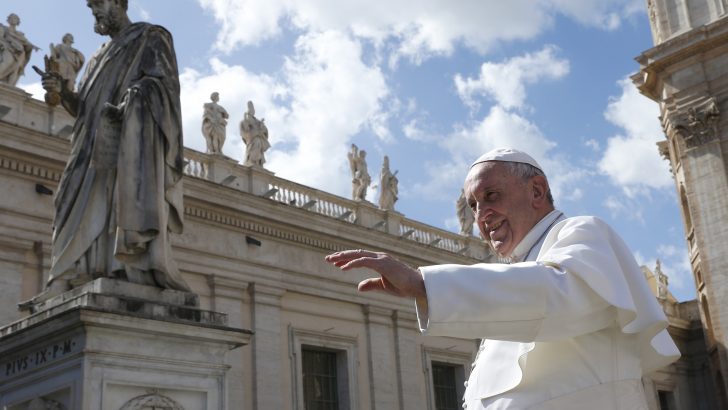In just two months’ time, Pope Francis will mark six years on the Throne of St Peter. For many, Cardinal Bergoglio came from nowhere. The Jesuit Archbishop of Buenos Aires was little known amongst Catholics, though he had made a deep and abiding impression on the College of Cardinals. Remember when Benedict XVI announced that he was stepping down, the cardinals met with a certain amount of trepidation bordering on panic.
The German Pontiff had felt unable to continue and in some ways the Church seemed rudderless. Benedict had spoken in his final remarks that “there were moments, as there were throughout the history of the Church, when the seas were rough and the wind blew against us and it seemed that the Lord was sleeping”.
As the pre-conclave meetings addressed the challenges facing the Church, the cardinals agreed on one thing: the Church needed a Pope who could excite and inspire people once again as well as begin the hard work of overdue institutional reform.
Beauty that is God
Years earlier, Cardinal Bergoglio had met with other Latin American prelates and adopted the Aparecida document as a fresh impetus to evangelise that continent. It spoke of a Church which must offer people the “full beauty that is God”. The document sought to answer the key question of why the Church was struggling to grow in many parts of the world. Overall, it concluded that so long as the Church is narcissistic and inward-looking it will never grow.
This experience flowed into Cardinal Bergoglio’s brief speech to the cardinals prior to the conclave that would go on to elect him, in which he imagined Jesus not on the outside knocking to be let in, but on the inside, asking to be let out; and in which he portrayed the Church as paralysed by introversion, reflecting its own light rather than Christ’s, becoming sick and self-referential, bent over like the woman in chapter 13 of St Luke’s Gospel.
He then presented a picture of an evangelising Church which puts Christ at its centre, and which goes out of itself to the peripheries, to places of need and suffering.
For Francis, the key is “pastoral and missionary conversion” for the entire Church. Mission then becomes not so much an activity or a programme as a way of being that is permanent: a Church that is always in mission mode rather than seeing it as part of what the Church does.
In this context, it’s also vital to see the entire world as mission territory rather than just the traditional lands where missionaries went.
In Evangelii Gaudium, Francis writes: “I dream of a ‘missionary option’, that is, a missionary impulse capable of transforming everything, so that the Church’s customs, ways of doing things, times and schedules, language and structures can be suitably channelled for the evangelisation of today’s world rather than for her self-preservation.”
For the Pope, the task of the Church is to raise up missionary disciples, not seduce adherents. Catholicism is a way of life rather than just a set of principles or arid documents.
The work of evangelisation is not to seek to fill up empty pews, but to help people have a living encounter with Jesus Christ – to put Him at the centre of our proclamation of the Gospel rather than the institution of the Church.
This is a particularly acute challenge in a country like Ireland where the Church has been part of the culture for so long. That is no longer the case and serious and committed Catholicism is fast becoming a minority. But, the Church grew and prospered in the pagan culture of the Roman Empire precisely because the early Christians could enliven those around them with the joy of the Gospel and the life-changing encounter with Christ.
It’s a passion that we need to find again and convince people that Christ remains irresistible.
Michael Kelly is co-author of a new book with Austen Ivereigh How to Defend the Faith – Without Raising Your Voice – it is available from Columba Books


 Michael Kelly
Michael Kelly
